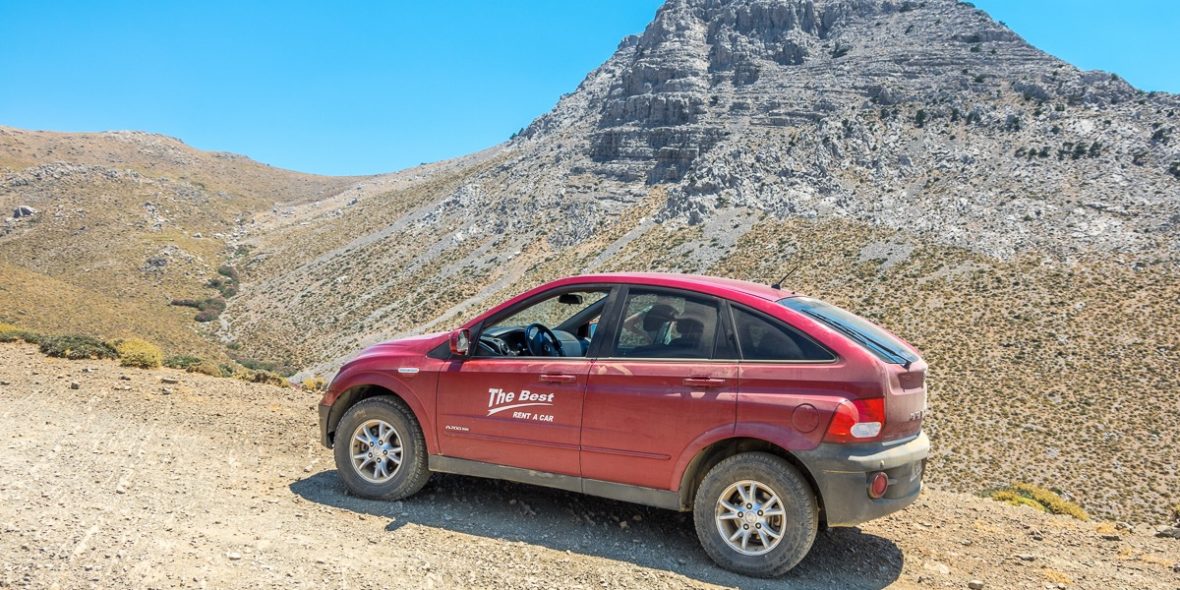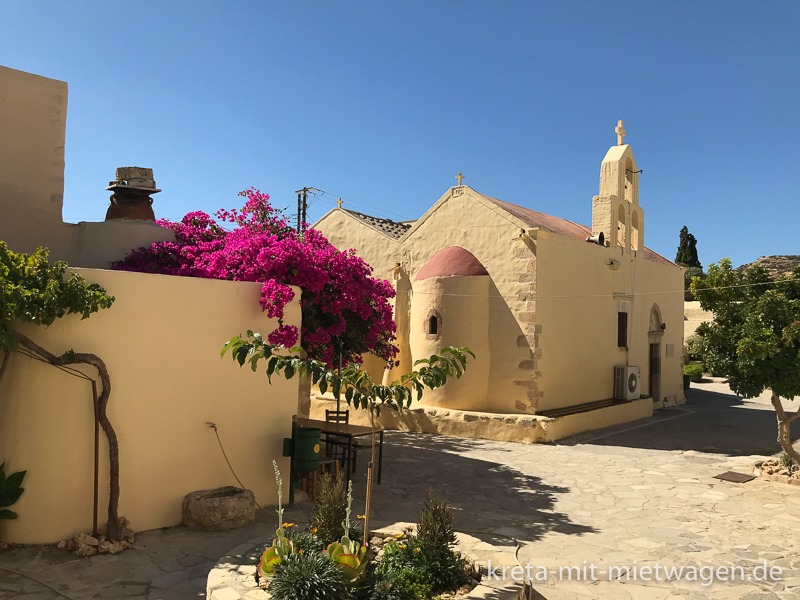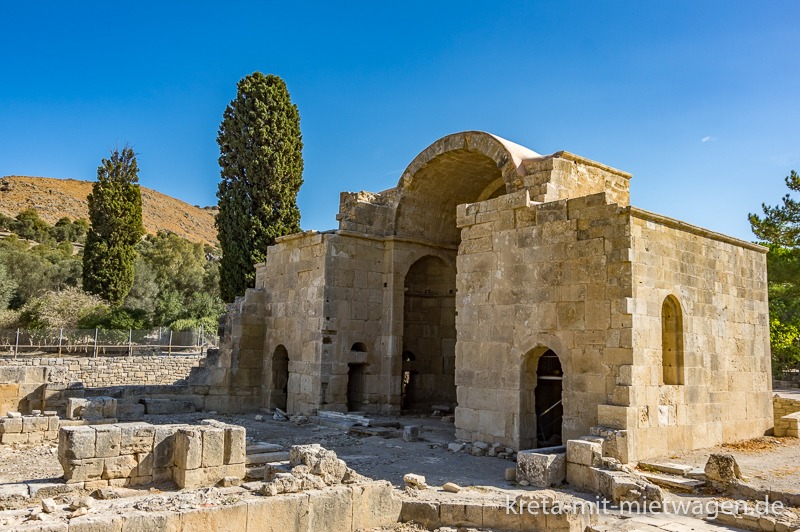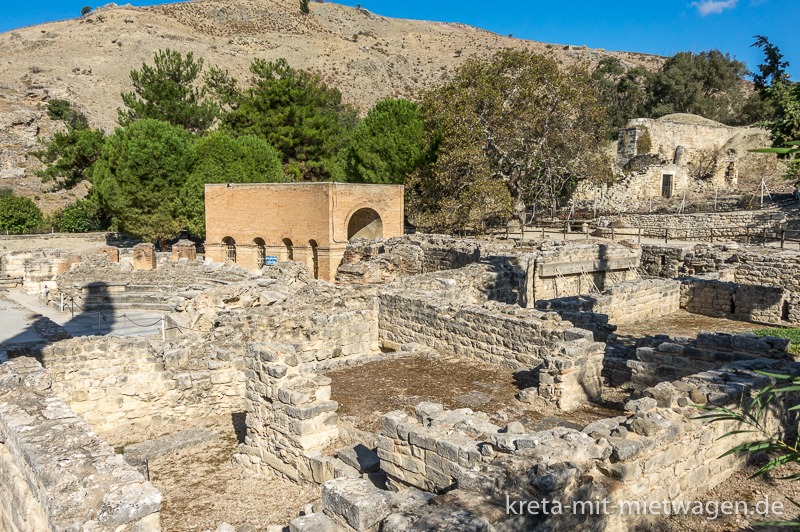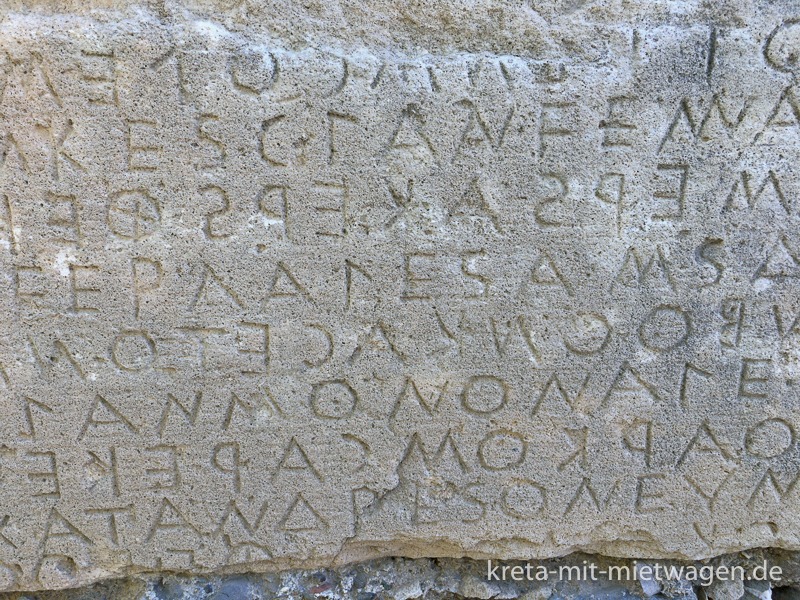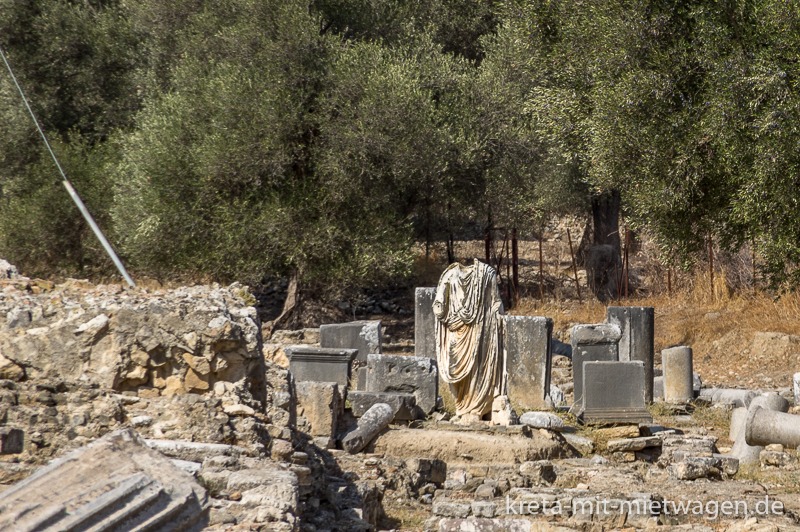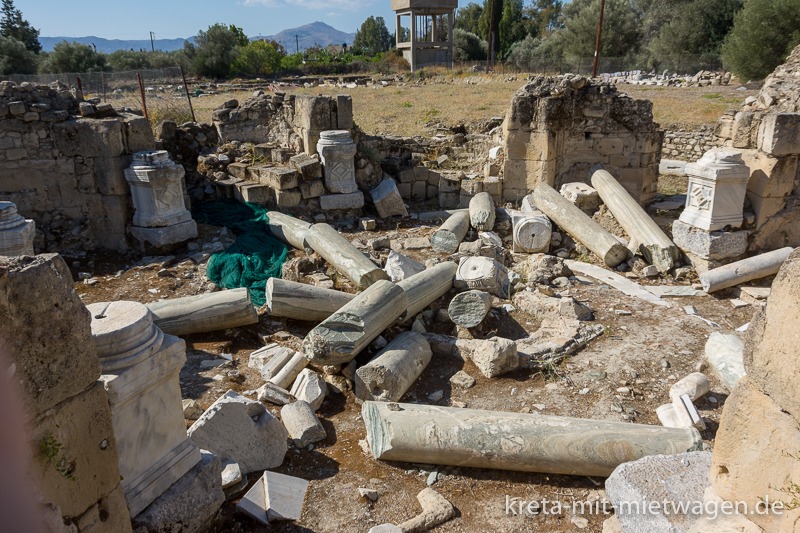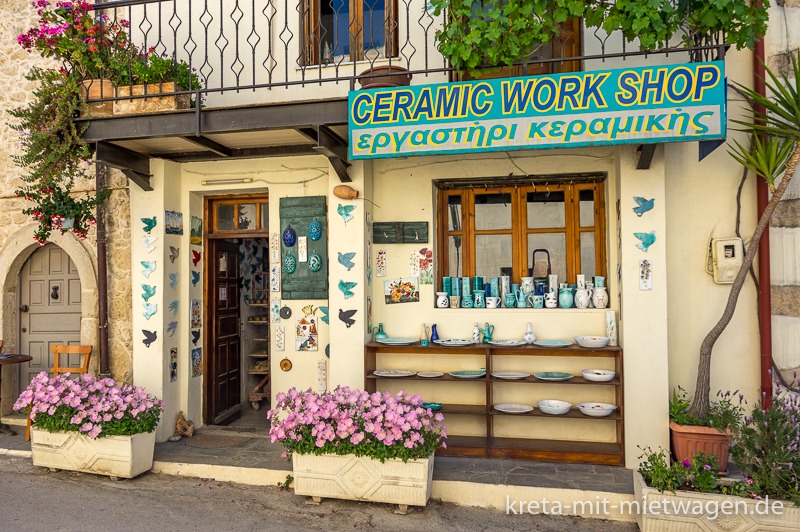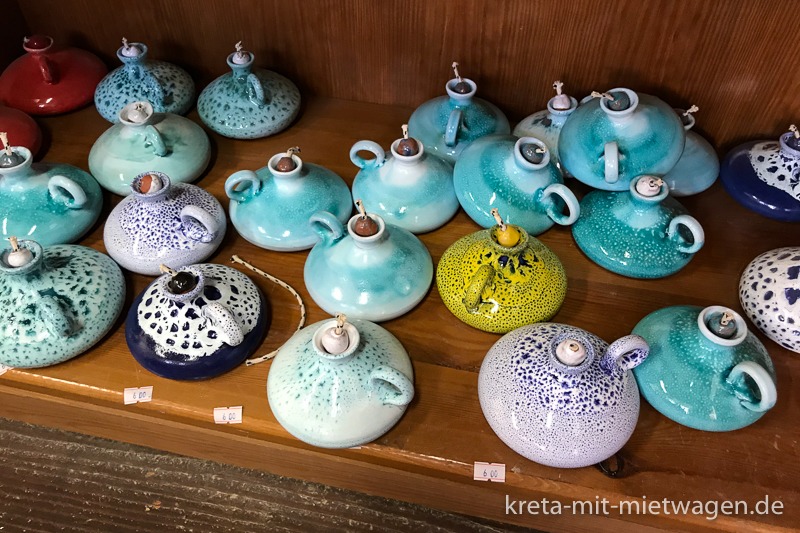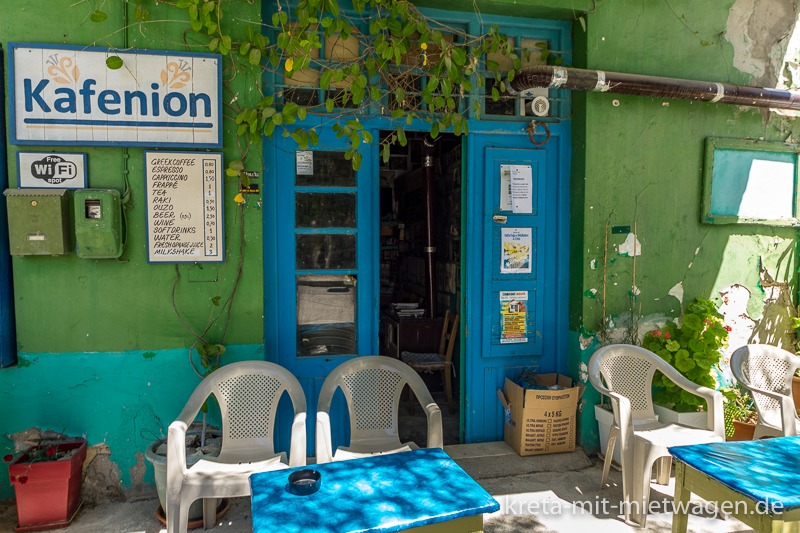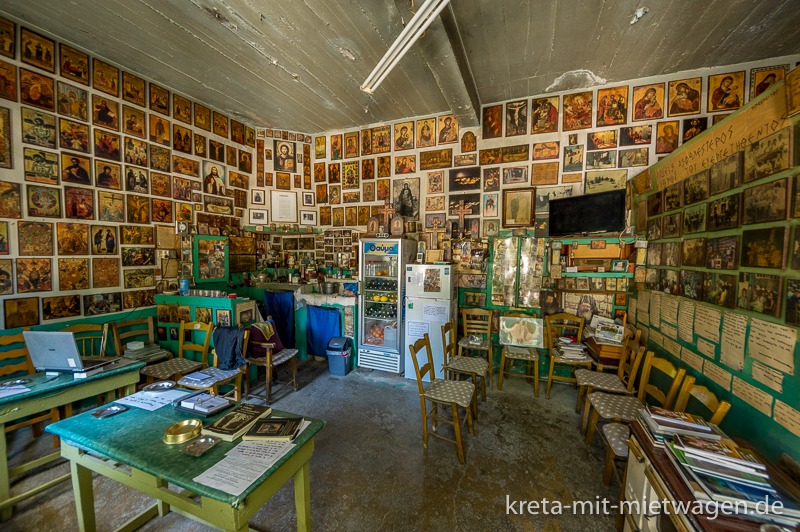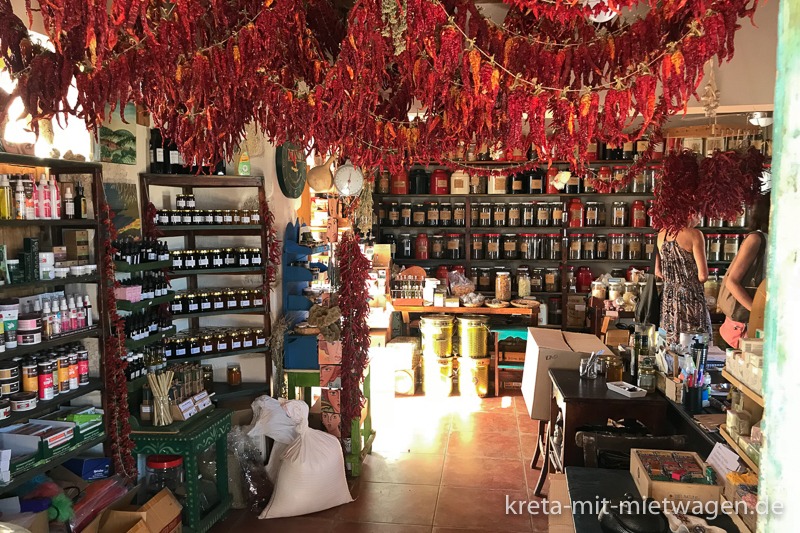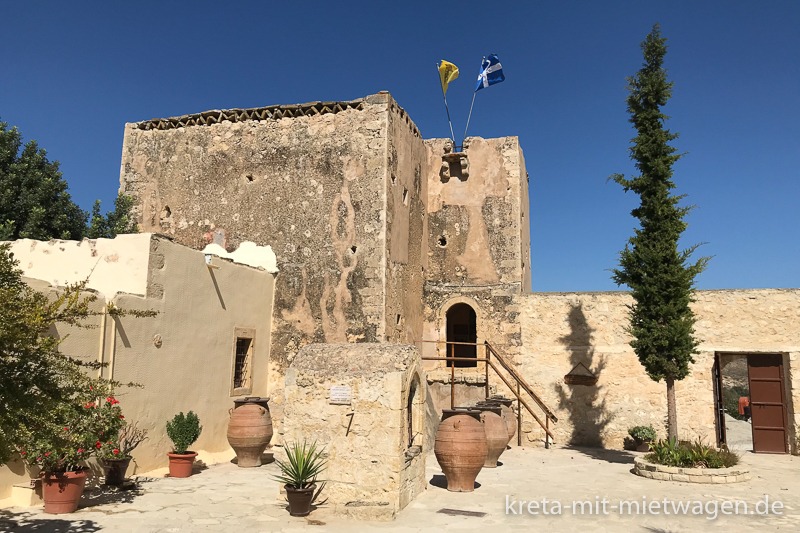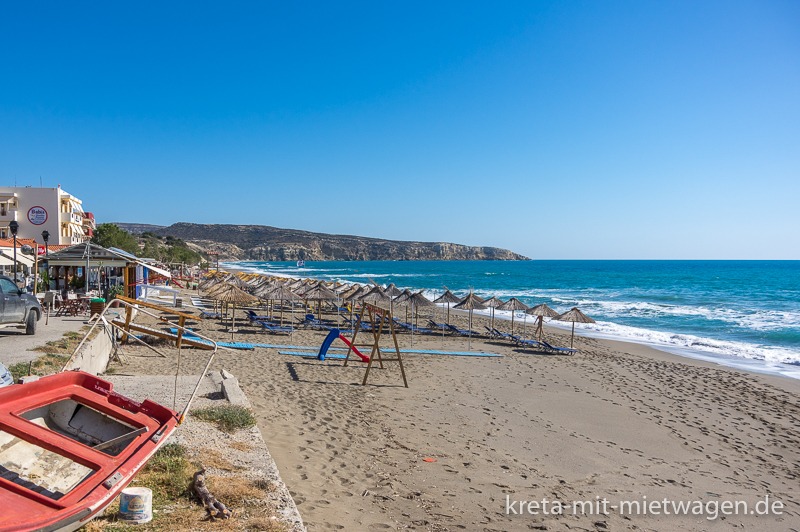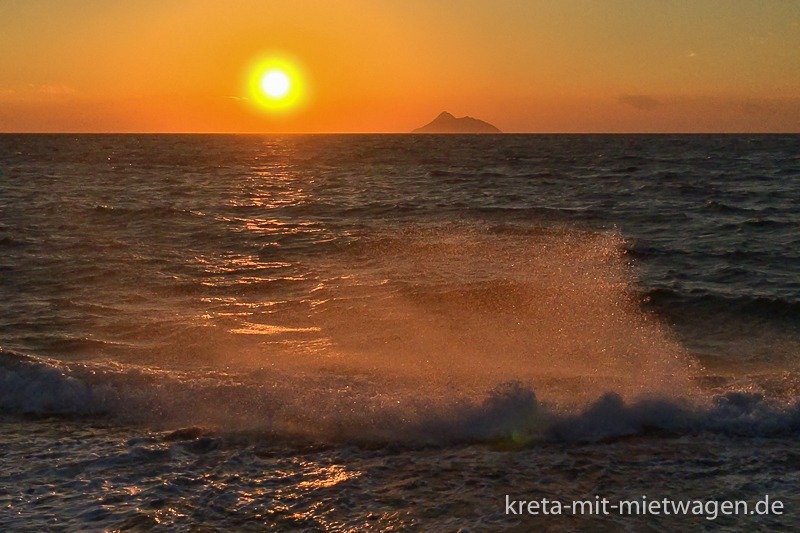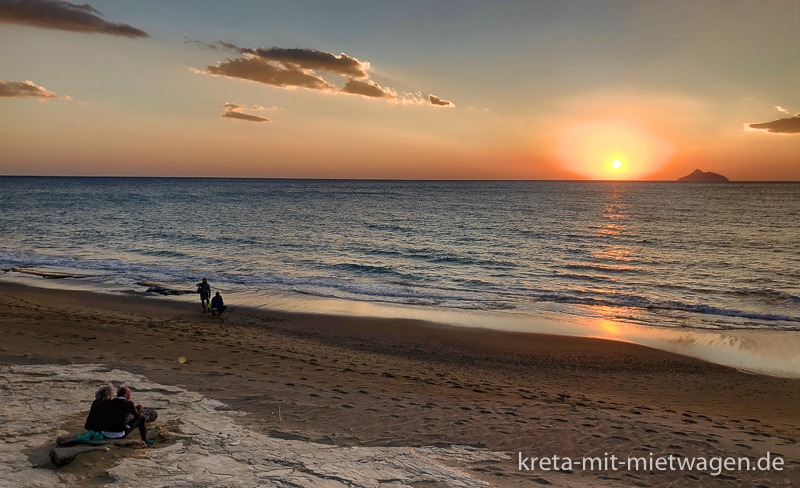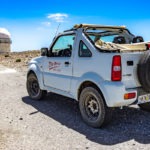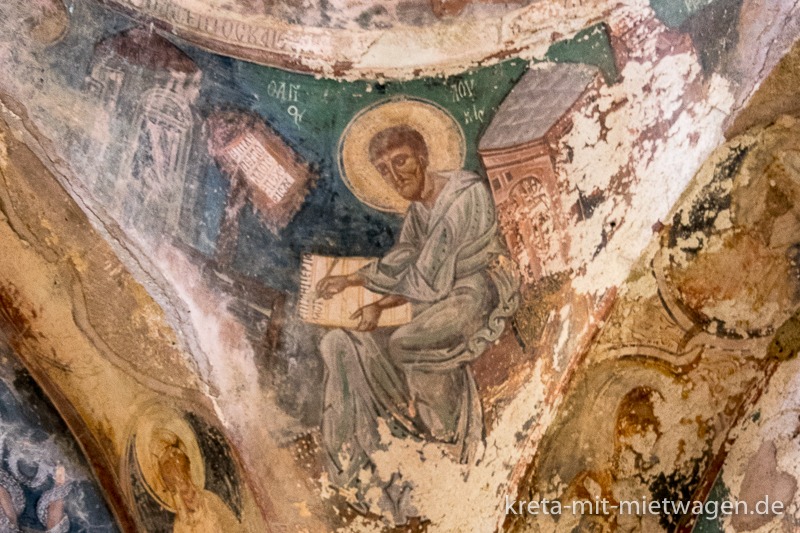
Malerei in der Kirche Agios Pavlos in Agios Ioannis
Heute beschreiben wir eine ebenso lohnenswerte Alternative zu unserem anderen Tagesausflug in den zentralen Süden, der sich hier findet.
Natürlich können einzelne Komponenten der beiden Ausflüge auch zu einer ganz eigenen Tour verbunden werden, da ist einfach die Kreativität des Lesers gefragt. ;-)
Die Anreise ist ebenfalls wieder aus Richtung Norden beschrieben, kann aber natürlich grundsätzlich beliebig zum Start der Tour nach Mires erfolgen.
Wer die Strecke aus Richtung Norden überhaupt nicht kennt, für den ist vielleicht dieses Video etwas, was den Weg vom Flughafen Heraklion bis zum Abzweig Mires beschreibt:
Ist man dort Richtung Mires abgebogen, führt diese Hauptverbindungsstraße in Richtung mittleren Süden erst durch die Aussenbezirke Iráklios und dann schnell in die ländliche Weinbauregion um Dafnés herum.
Auch auf dieser Tour biegen wir im Kreisverkehr vor Agia Varvára nicht auf die neue Schnellstraße Richtung Mires ab, sondern fahren in Richtung Ortmitte.
Wer hier im Ort schon einen Stopp einlegen möchte, findet als Besonderheit mehrere Geschäfte mit der typisch kretischen traditionellen Männerkleidung. Außerdem gibt es einen Schuster für die handgemachten Stiefel, die perfekt zu den oben weiten und zur Wade hin sehr schmal geschnittenen Hosen passen.
Einige Kurven hinter dem Dorf hat man dann den ersten Ausblick auf die gewaltige Messará-Ebene, die sich wie ein breiter grüner Strom zwischen den Asteroussiabergen im Süden und dem Psiloritis-Gebirge im Süden in Richtung libysche See ergiesst.
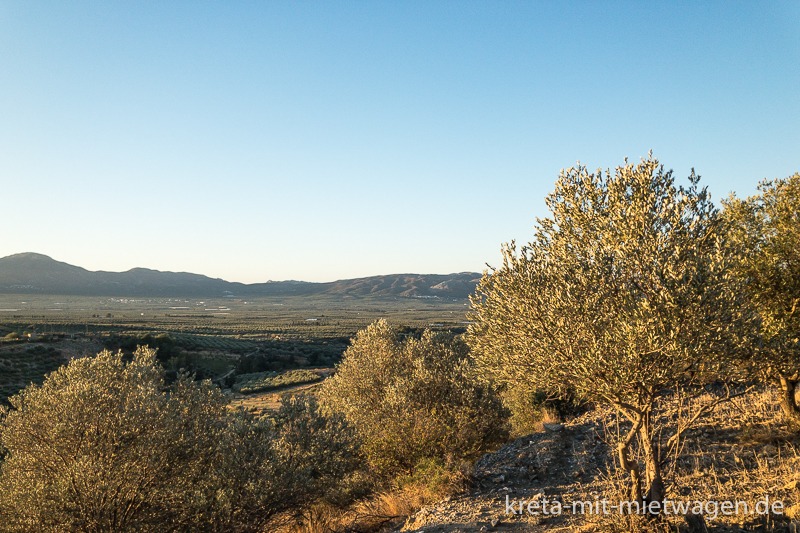
Messara bei Sonnenaufgang
Über eine gut ausgebaute, aber kurvige Straße geht dann hinunter nach Agii Déka, dem Dorf, das nach zehn christlichen Märtyrern benannt ist, die dort im 3. Jahrhundert n. Chr. ihres Glaubens wegen enthauptet wurden.
Weiter geht die Fahrt vorbei an der interessanten Ausgrabung Gortys (in unserem anderen Ausflugstipp beschrieben) in den Marktflecken Mires, quasi die Hauptstadt der Messará.
Mires allein lohnt schon einen Besuch. Hier kann man so richtig in das griechische Kleinstadtleben eintauchen und in einem der Kafenía an der Plateía dem Treiben der Menschen zusehen. Auch wegen der zahlreichen kleinen Geschäfte lohnt sich ein Bummel. Für eine Einkehr ist das Café mit den besten Loukoumádes (frittierte Teigbällchen, warm mit Honig und Sesam übergossen) der Region am westlichen Ende der Plateía sehr zu empfehlen.
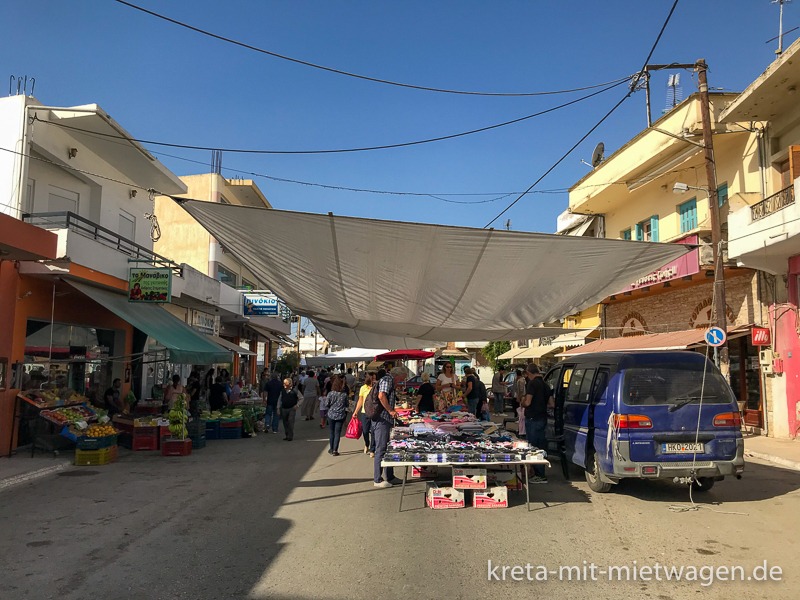
Wochenmarkt in Mires
Am Samstag vormittag ist dann alles anders. Die Stadt brummt, es ist Wochenmarkt. Es gibt fast nichts, was es hier nicht zu kaufen gibt. Haushaltswaren aller Art, Bekleidung, Unterwäsche, Heimtextilien, Fleisch. Auch den leckeren handgemachten Käse Kretas, den Graviéra, Thymianhonig und das frische Obst und Gemüse der Region findet man hier.
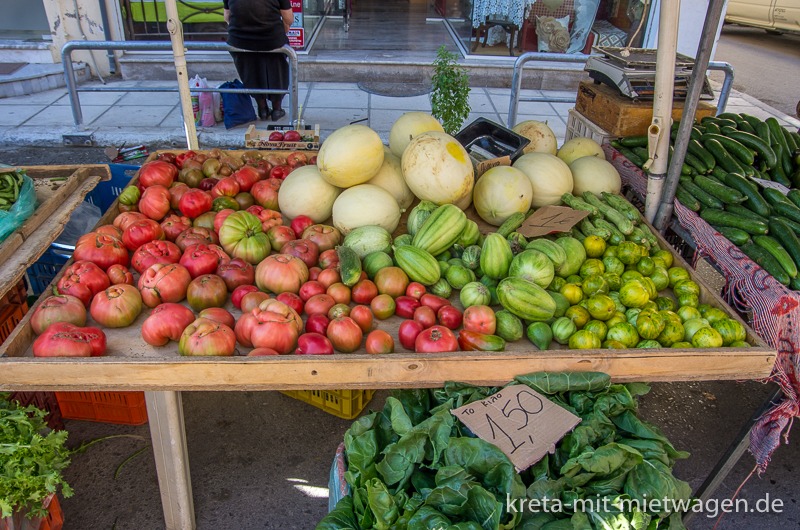
Wochenmarkt in Mires
Aufgelockert wird das Angebot durch Stände mit schönem Makramee- und Silberschmuck, sowie verschiedene Kräuterstände.
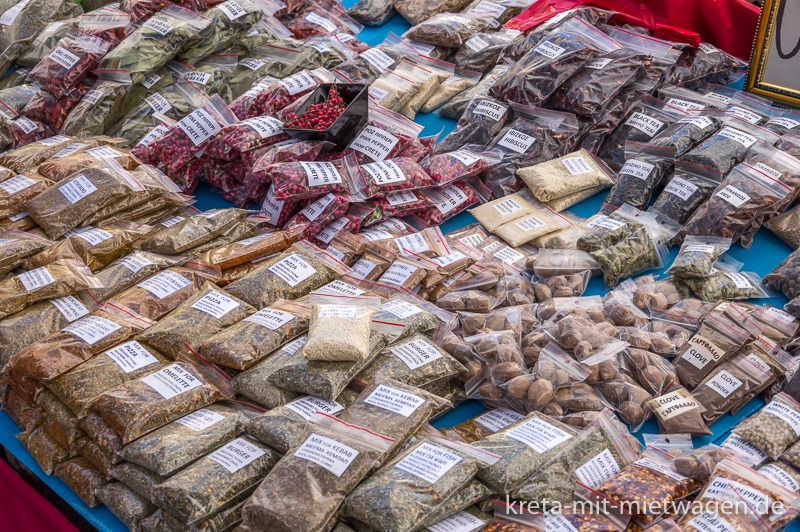
Kräuterstand auf dem Wochenmarkt in Mires
Diese sind nicht alle gleich gut, unbedingt vor dem Kauf die Qualität prüfen.
Ausklingen lässt man den Marktbummel am östlichen oder westlichen Ende des Marktes an einem der Souvlaki-Stände.
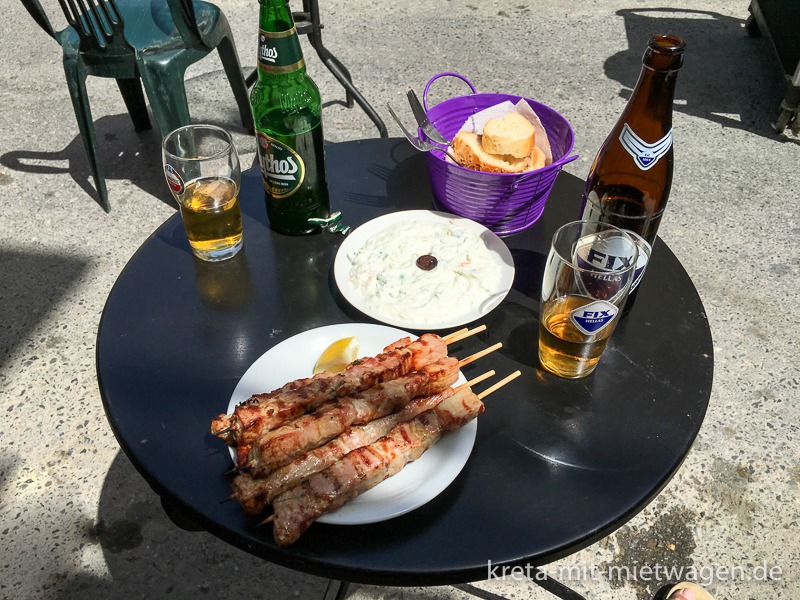
Verdiente Belohnung: Wochenmarkt-Ausklang mit Souvlaki
Wir verlassen die Stadt in Richtung Westen und folgen der Hauptstraße. Nach knapp fünf Kilometern geht es nach links in Richtung Phaístos, der zweitgrößten minoischen Ausgrabung auf der Insel, die wunderschön auf einem Felsrücken über der Ebene liegt.
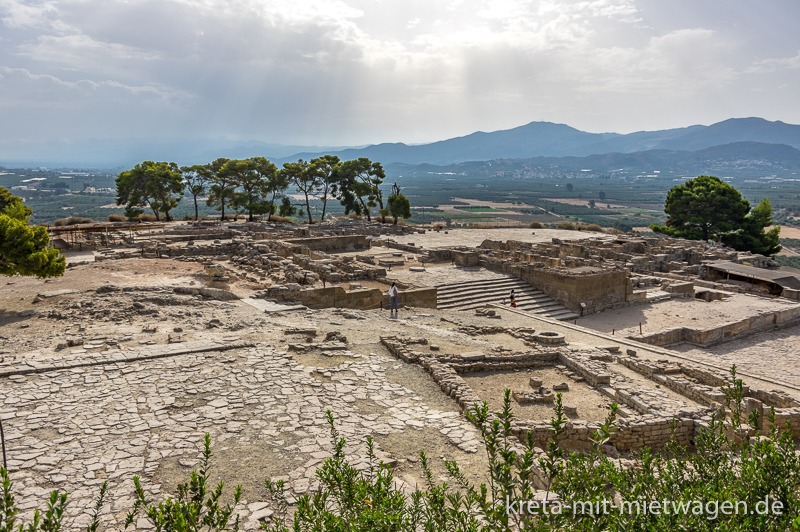
Blick über Phaistos auf die Messara
Viele sagen, dass es die schönste minoische Palastanlage auf der Insel ist, da die Ausgrabung sehr weitläufig und vor allem, im Gegensatz zu Knossos „naturbelassen“ ist.
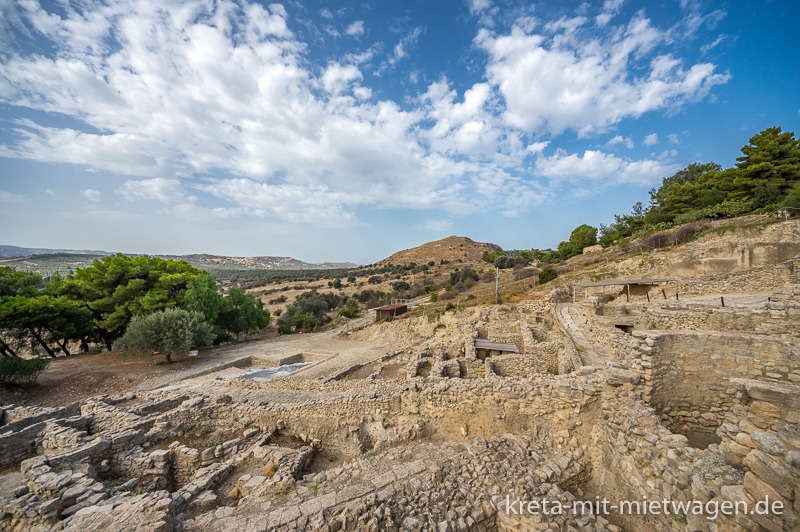
Phaistos
Hier gab es keinen Sir Arthur Evans, der seine persönlichen Phantasien zum Thema minoisches Leben in Beton und Farbe ausgelebt hat, sondern alles ist im Original erhalten und behutsam restauriert.
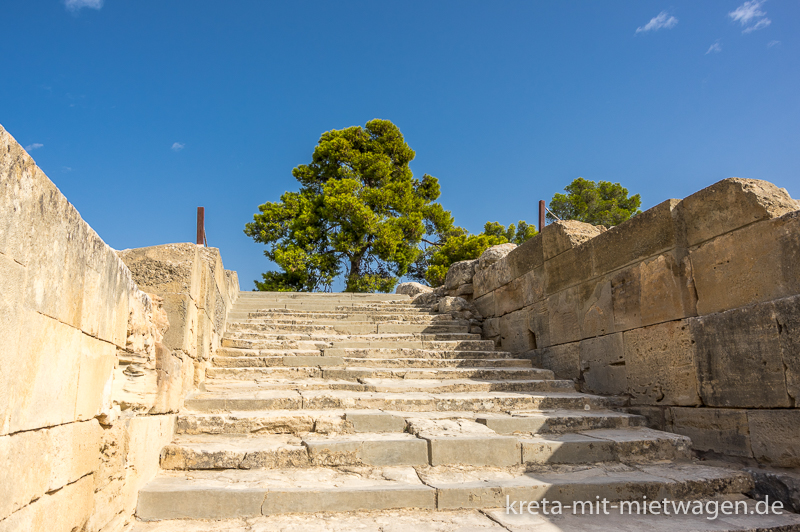
Phaistos
Die kleine, historische Kirche „Agios Georgios“ hinter dem Parkplatz der Anlage an der Straße Richtung stammt zwar nicht aus minoischer Zeit, ist aber ebenfalls durchaus sehenswert und fotogen.
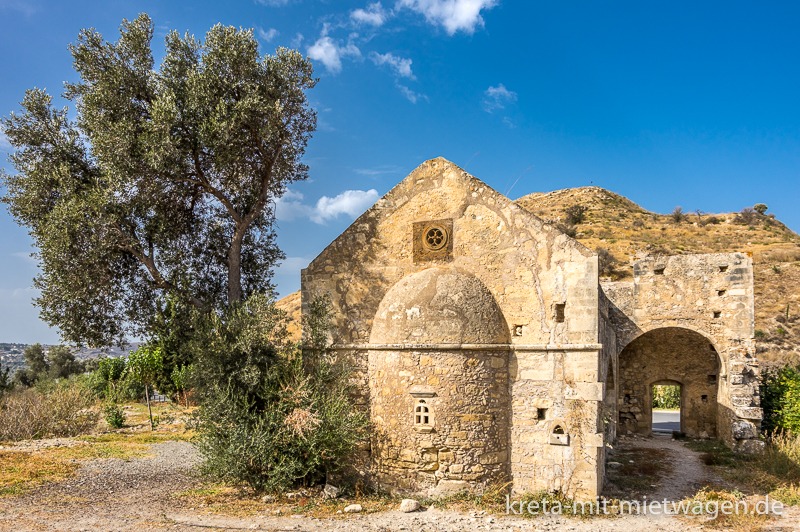
Kirche Agios Georgios bei Phaistos
Fährt man nun von Phaístos aus in Richtung Sivas, kommt man durch das winzige Örtchen Agios Ióannis.
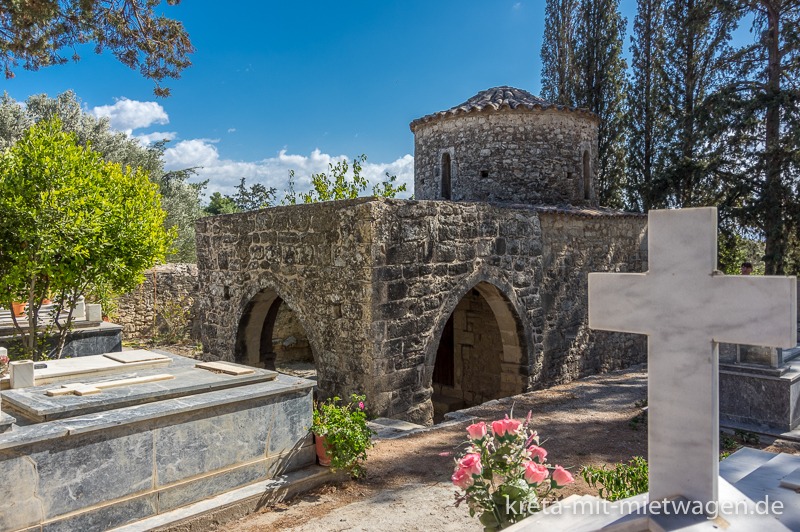
Links an der Straße liegt hier die kleine Kapelle Agios Pávlos, deren älteste Bestandteile schon aus dem 5. Jahrhundert n. Chr. stammen. Hier gibt es schöne Reste von Fresken und einen interessanten kleinen Friedhof mit Knochenkapelle zu sehen.

Malerei in der Kirche Agios Pavlos in Agios Ioannis
Haltet unbedingt an, dieser Ort hat eine unbeschreibliche Atmosphäre, auch wenn die Kirche mittlerweile öfter mal verschlossen ist.
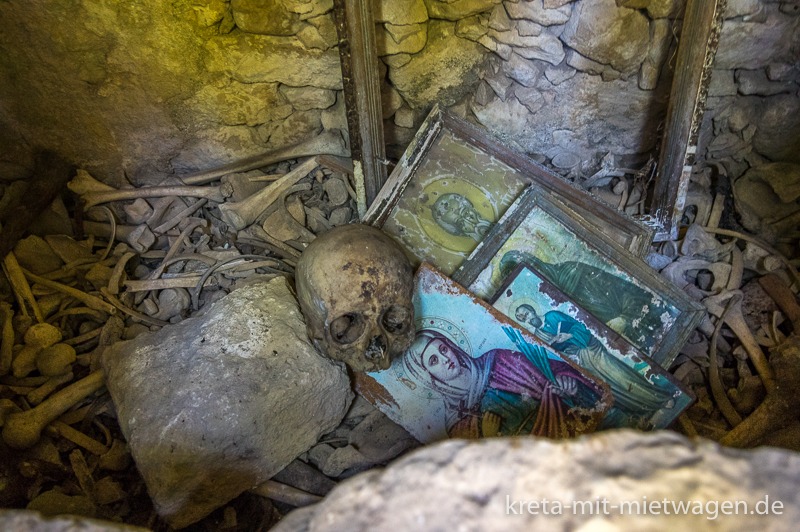
Knochenkapelle von Agios Pavlos
Weiter geht es nun in Richtung Süden, bis die Taverne „Strofi“ („Στροφή“) auf der rechten Seite vor einer Kreuzung auftaucht. Hier biegt man links ab auf die von Matala kommende Straße Richtung Petrokefali.
Nach kurzer Zeit sieht man gelbe Steine mit stilisierten Eseln darauf am Straßenrand.
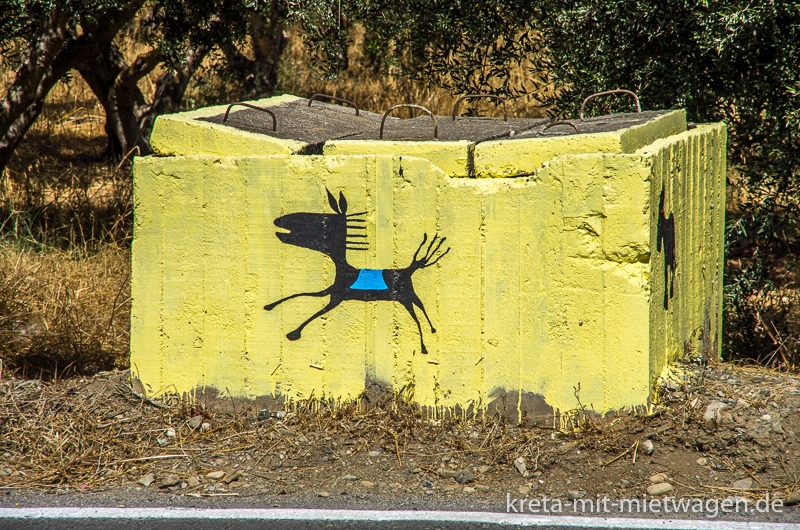
Agia Marina Donkey Rescue – Wegweiser zu den Eseln
Diese sind Bestandteil der Ausschilderung zum Agia Marina Donkey Resort, welches vordringlich ein Gnadenhof für zumeist alte, ausgebeutete und oft auch mißhandelte Esel ist.
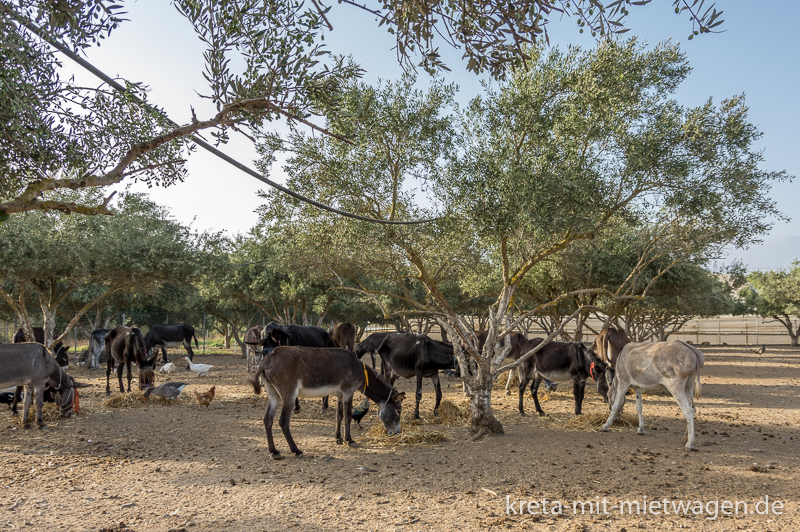
Die Esel-Herde von Agia Marina
Aber nicht nur den Eseln wird hier geholfen, sondern auch oft hilflosen Katzen und Hunden, die aufgepäppelt werden und in ein liebevolles Zuhause vermittelt. Interessierte Gäste bekommen eine Gratisführung über das Gelände und können die sehr freundlichen Esel hautnah erleben.
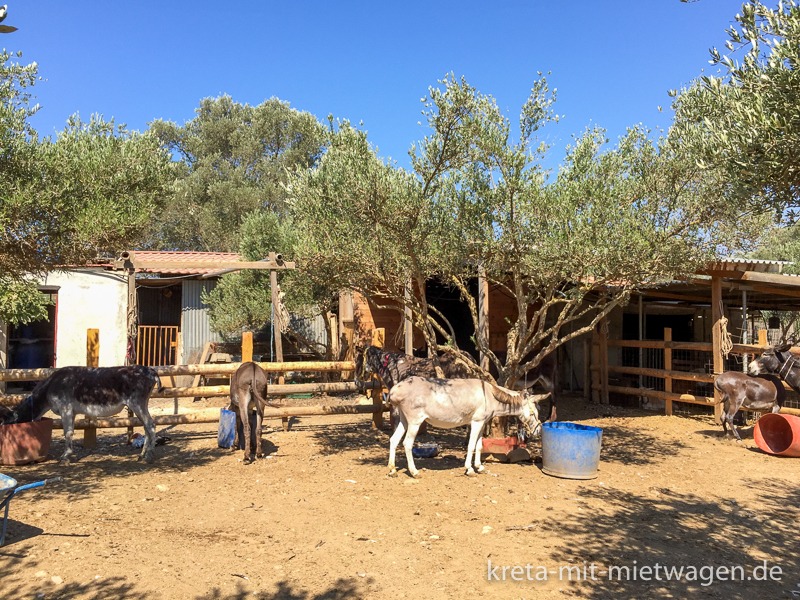
Agia Marina Donkey Rescue Resort
Hier sind Spenden in Form von Geld oder auch mal ein Sack Möhren für die Esel immer hochwillkommen. Um den Frieden der Tiere zu wahren, gibt es eingeschränkte Öffnungszeiten, die man am besten aktuell hier auf der Web-Seite des Resorts nachliest.
Vorbei am schönen Ort Sivas (siehe auch hier unseren alternativen Routenvorschlag) geht es weiter nach Pitsídia, ein ebenfalls liebevoll renoviertes Dörfchen mit einer sehr schönen, mit Maulbeerbäumen gesäumten Plateía mit verschiedenen Tavernen.
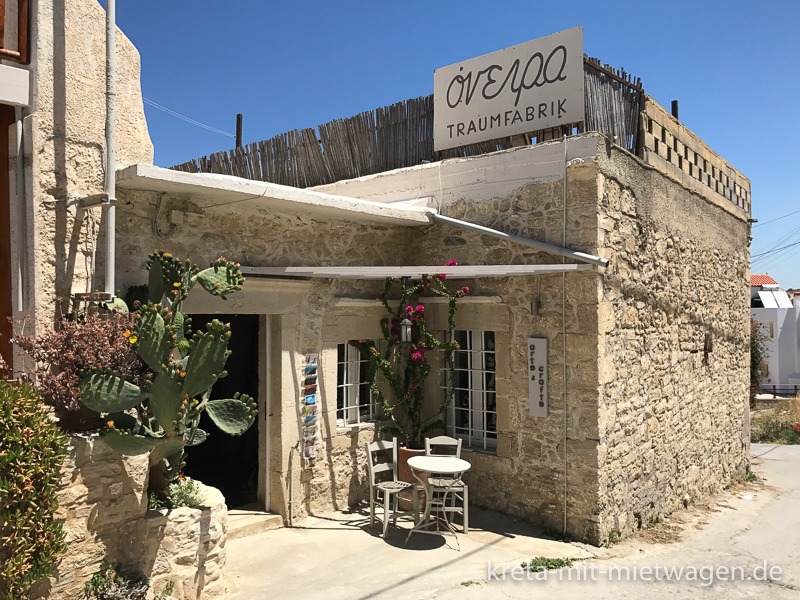
Onira – Traumfabrik – in Pitsidia
Hier in Pitsidia befindet sich auch „Ónira“ die „Traumfabrik“, ein besonders bei deutschen Bildungsbürgern (und denen, die sich dafür halten) beliebter Treffpunkt mit schöner, schattiger Terrasse.
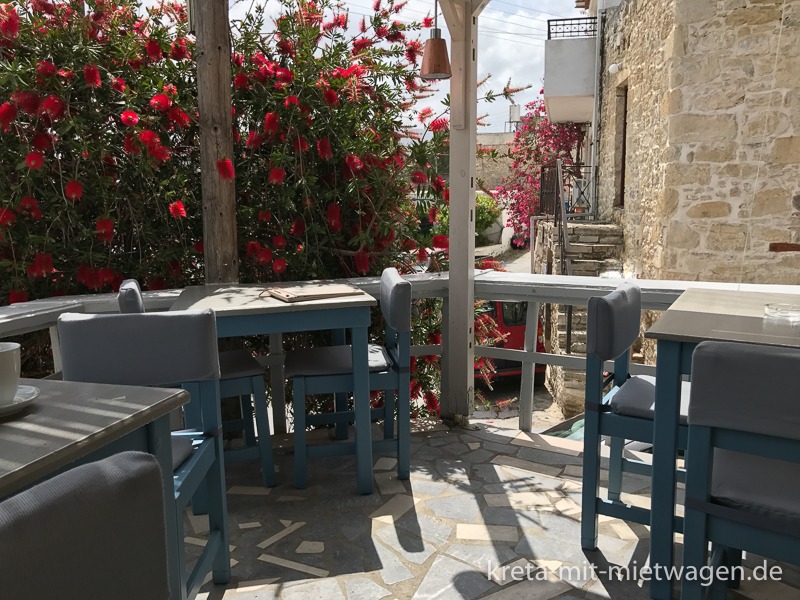
Onira – Traumfabrik – in Pitsidia
Seit vielen Jahren wird das Lokal von Jaqueline und Horst, einem Goldschmied aus Hamburg, geführt. In einer historischen Ölmühle ist eine Mischung aus Restaurant, Café und Laden für hochwertigen und sehr geschmackvollen Gold- und Silberschmuck und schöne Souvenirs entstanden. Hier treffen sich vorwiegend Residenten und Urlauber. Besonders beliebt sind das gute Frühstücksangebot und die tollen Cocktails hier.
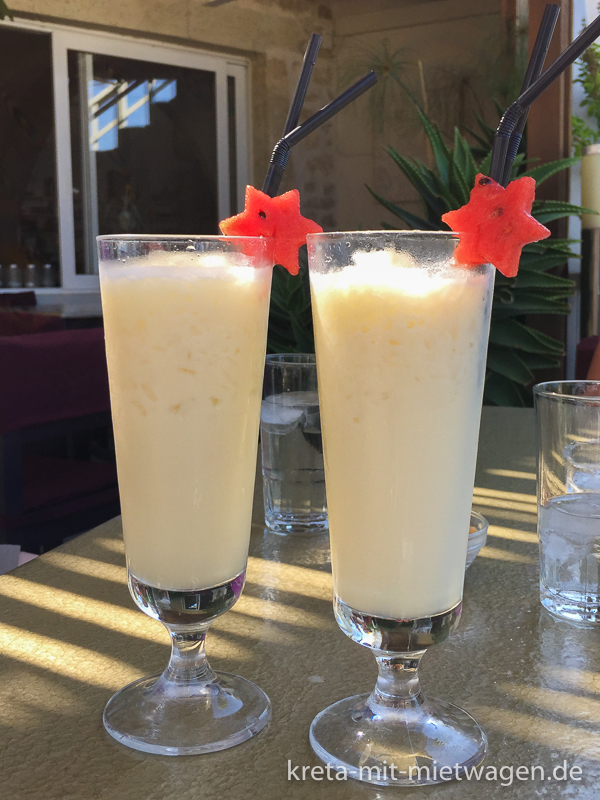
Onira – Traumfabrik – leckere Pina Colada
Zum Baden und Flanieren geht es dieses Mal nach Mátala, einem quirligen Touristenort am Meer.
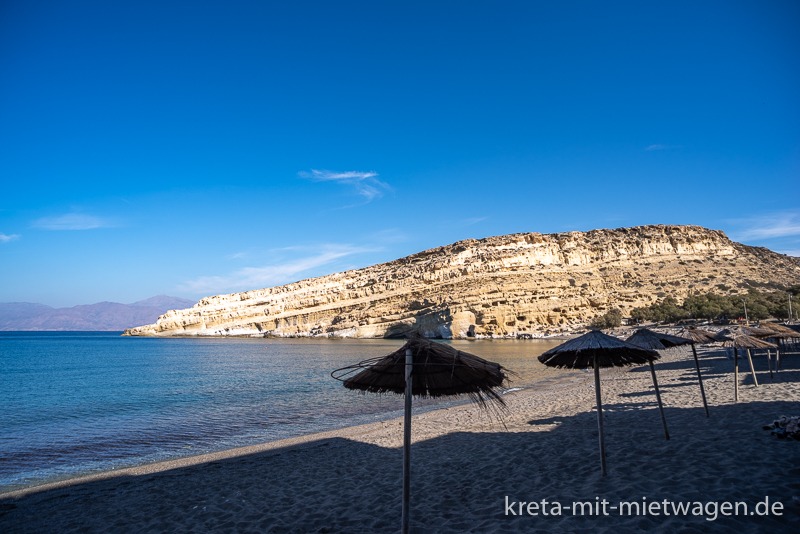
Strand und Höhlen von Matala
Berühmt wurde Mátala durch seine, den Ortsstrand umrahmenden Höhlen, in denen in den 70er Jahren viele Hippies gelebt haben. Hier gibt es konserviertes und neu erfundenes Hippiefeeling, bis es quietscht.
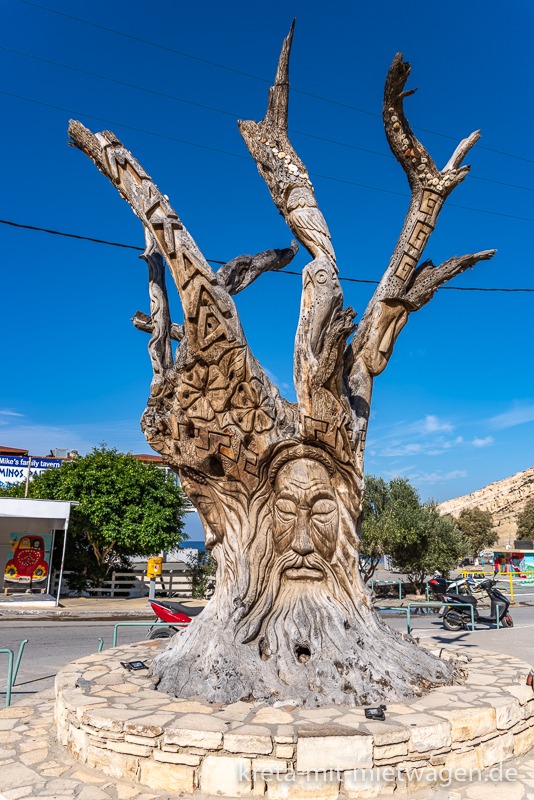
Totholz mit Schnitzerei in Matala
Ein mit Schnitzereien verzierter Baum, ein mit Blumen bemalter VW-Käfer an der Straße, ein Bus als Fresko an der Hauswand.
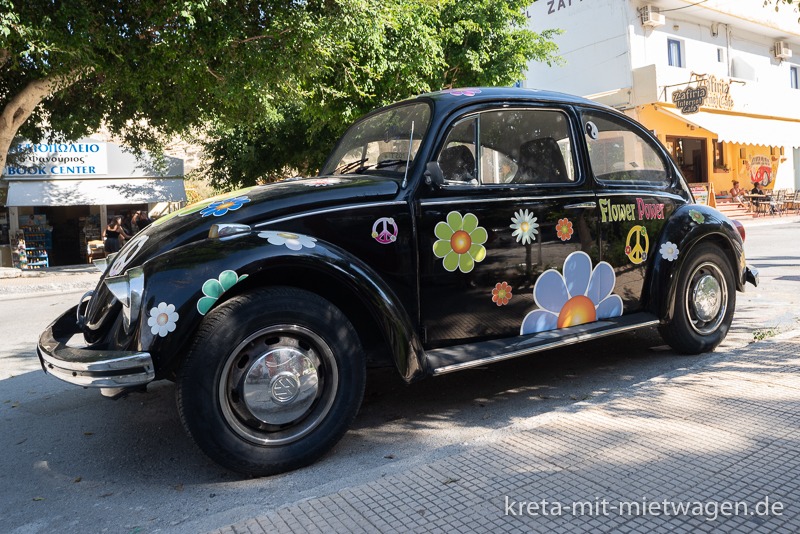
Typisches Matala-Fotomotiv
Bemaltes Straßenpflaster und eine Bar, die wie ein altes Piratennest wirkt. Insgesamt durchaus ein ziemlich stimmiges Bild, auch wenn böse Stimmen behaupten, dass es hier wie im Hippie-Disneyland aussieht. Und natürlich darf niemals ein Foto vom berühmten Matala-Spruch „Today ist life, tomorrow never comes“ fehlen, der dort seit Jahrzehnten an der Strandmauer steht und regelmäßig erneuert wird…
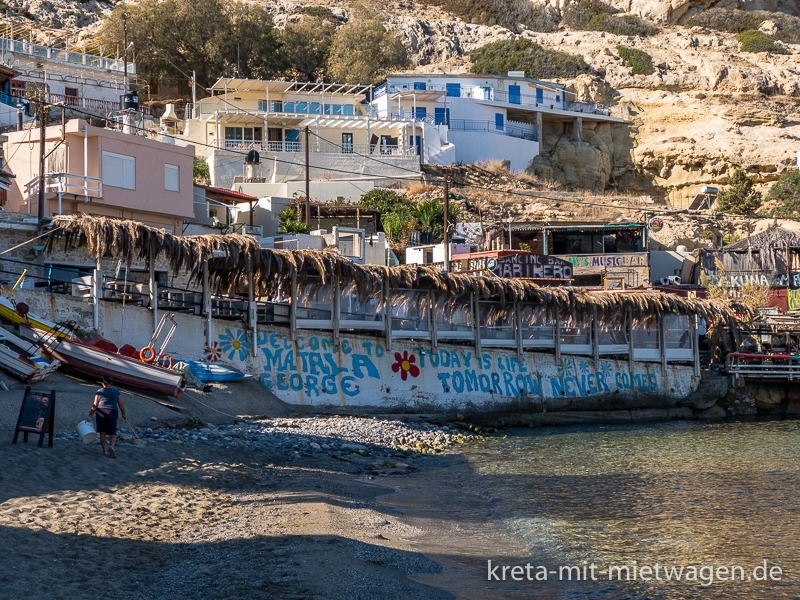
Today is life, tomorrow never comes
Fahrt hin und macht euch euer eigenes Bild.
Wer abends noch da ist, kann einen der traumhaften Sonnenuntergänge des kretischen Südens hier genießen. Durch die vorgelagerten Paximadia-Inseln im Abendlicht und die schön beleuchteten Felswände hat man oft ein postkartenreifes Fotomotiv.
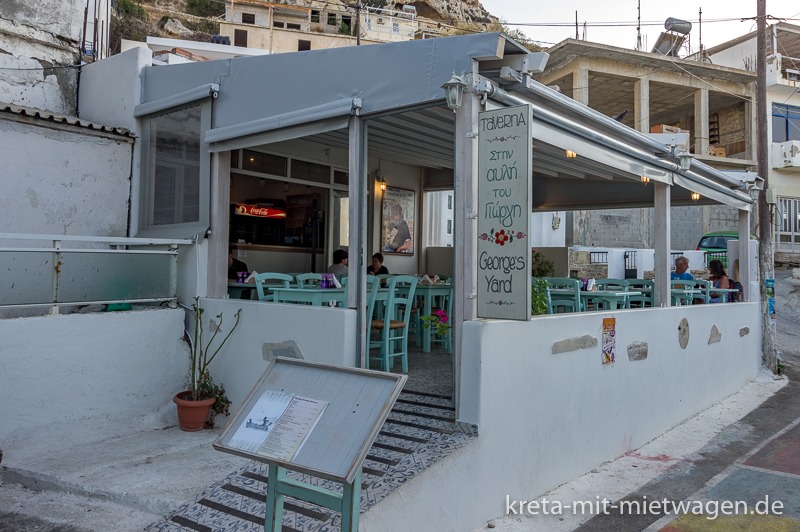
Unser Restaurant-Tipp für Matala: Das „Georges Yard“
Richtig gemütlich wird Matala erst, wenn die Busse mit den Tagestouristen wieder verschwunden sind. Für diejenigen, die noch bleiben können, empfehlen wir zum Essen das „Georges Yard„, direkt an der „Hauptmeile“ durch den Ort gelegen, oder das „Scala“, in den Felsen am Ortsende.
